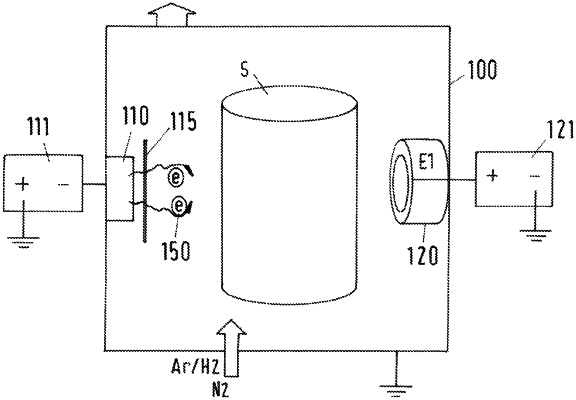| CPC H01J 37/32669 (2013.01) [C23C 14/325 (2013.01); H01J 37/32055 (2013.01); H01J 37/32568 (2013.01); H01J 37/32651 (2013.01); H01J 37/34 (2013.01)] | 18 Claims |

|
1. A vacuum chamber for performing a plasma treatment comprising a plasma treatment area which is enclosed by chamber walls, and a plasma source comprising:
at least one cathode arranged in the vacuum chamber for cathodic vacuum arc evaporation with an arc anode which is connected to the vacuum chamber;
a shield which can be arranged in front of the cathode;
at least one electrode arranged in the vacuum chamber, wherein the electrode comprises a working surface for collecting the electrons emitted from the cathode;
wherein
the working surface is a two-dimensional surface for collecting the electrons emitted from the cathode, and the two-dimensional surface has a first orthogonal extension and a second orthogonal extension to a surface normal, wherein the first orthogonal extension is perpendicular to the second orthogonal extension and a length ratio of the first orthogonal extension to the second orthogonal extension is between 0.1 and 1,
at least one magnet for generating a magnetic field which acts on the working surface of the electrode is arranged in, on or in and on the vacuum chamber,
the at least one magnet comprises a front-side magnet and a rear-side magnet, wherein the front-side magnet is arranged in an area of the working surface for generating a front-side magnetic field and the rear-side magnet is arranged behind the working surface for generating a rear-side magnetic field.
|